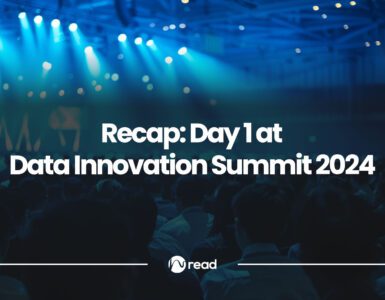In the light of ever-growing and evolving technology, copious data, consumer touchpoints and hierarchy, enterprises are dealing with an overflow of unrelated and unorganised data. Traditional IT operations and management find themselves unable to cope with the huge volumes of data, leaving a lot of work to humans to deal with manually and making IT operations management unsustainable. Enter AIOps into the picture.
AIOps is the application of artificial intelligence into IT operations. This adoption of intelligent computing in IT has become essential for monitoring and managing modern IT environments as organisations are moving from traditional infrastructure to hybrid, dynamic and distributed one, consisting of a blend of on-premises, managed cloud, private cloud, and public cloud environments.
Gartner coined the term in 2017 (originally called Algorithmic IT Operations, later changed to Artificial Intelligence for IT Operations), describing AIOps as “software systems that combine big data and artificial intelligence (AI) or machine-learning functionality “to enhance and partially replace all primary IT operations functions, including availability and performance monitoring, event correlation and analysis, and IT service management, and automation.”
They predicted that IT Operations would undergo a huge change brought about by digital transformation in the next few years. Looking back, Gartner’s predictions proved correct as the popularity and adoption of AIOps is rapidly growing.


What is driving AIOps?
Enterprises’ interest in AIOps is not coincidental. There are many developments in the ITOps field driving the need for AIOps.
Too much data for traditional IT methods
Many businesses today are transitioning from traditional static, on-prem infrastructure to a mix of dynamic cloud or hybrid environments that constantly scale and reconfigure. Systems and applications connected to this environment generate tons of data that traditional domain-based IT management solutions can’t deal with.
Traditional domain-based IT management solutions can’t keep up with the volume, can’t intelligently sort the significant events out of the crush of surrounding data, can’t correlate data across different but interdependent environments, and can’t provide the real-time insight and predictive analysis IT operations teams need to respond to issues fast enough to meet user and customer service level expectations.
The growing complexity of dynamic IT environments
Also, performance monitoring is growing in the number of events and alerts. Companies are introducing many IoT devices, APIs, applications, project management, help desk and IT management tools and software, with growing digital and machine users to run daily operations. Data from these different pieces of software is accumulated into monitoring systems that create alerts when they spot issues. However, the number of alerts generated per minute can reach up to hundreds or thousands.
Traditional approaches with offline, manual efforts that require human intervention for performance monitoring and managing IT operations don’t apply to dynamic and elastic environments. Human capabilities are no match for this scale of complexity.
The need to solve IT infrastructure problems immediately
As organisations digitise their operations, technology and IT become the central component of business. Widespread use of technology has also changed user expectations in all industries and made it crucial for the proper functioning of processes. This is why IT issues need to be addressed immediately and effectively.
How AIOps works
AIOps emerges as a lifeline for Ops professionals, introducing the much-needed automation of routine tasks and freeing time for the DevOps team to dedicate to more critical, high-value issues. An AIOps platform ingests heterogeneous data from different sources related to all components of the IT environment, including networks, applications, infrastructure, cloud instances, storage and more.
AIOps consists of two main components: big data and machine learning. It aggregates siloed IT operations data which can include:
- Historical performance and event data
- Streaming real-time operations events
- System logs and metrics
- Network data, including packet data
- Incident-related data and ticketing
- Related document-based data
Then it implements comprehensive analytics and machine learning capabilities to provide automation-driven insights and continuous improvements. AIOps can be viewed as continuous integration and deployment (CI/CD) for core IT functions. As it continuously learns from the results of the analytics, machine learning capabilities can adjust or create new algorithms to identify problems faster and recommend more effective solutions.
AI models can also help the system learn about and adapt to changes in the environment, such as new infrastructure provisioned or reconfigured by DevOps teams.
For AIOps to yield continuous insights and improvements, it bridges 3 IT disciplines:
- Service management (“Engage”)
- Performance management (“Observe”)
- Automation (“Act”)


Benefits of AIOps
The fundamental benefit of AIOps is that IT Operations can identify, address and resolve issues and outages faster and in a more agile manner than they would if they were to manually check alerts coming from numerous IT operations tools and applications. This also helps the team ensure uptime of critical systems and services for delivering a great customer experience. More granularly, these are some more of the significant benefits of AIOps:
Eliminates silos
The enormous amounts of data are the main reason why organisations haven’t been able to monitor systems in their IT environments. AIOps enables us to break down the silos and get clear visibility across all IT environments.
AIOps replaces multiple siloed, manual IT operations tools with a single, intelligent, and automated IT operations platform underpinned by big data and machine learning, enabling IT operations teams to respond more quickly—even proactively—to slowdowns and outages, with a lot less effort, explains IBM.
Streamlines performance monitoring and management
The increase of monitoring tools creates complexity in correlating and analysing multiple applications performance metrics to identify and address the problems before they affect user experience. AIOps delivers a single, unified view of analytics across all domains integrated in the services.
This way, AIOps bridges the gap between an increasingly accelerated, dynamic, and difficult-to-monitor IT environment, on the one hand, and user expectations for little or no interruption in application performance and availability, on the other. Most experts consider AIOps to be the future of IT operations management, states IBM.
Removes IT noise
IT noise is another great hurdle that bogs down IT operations. It can cause serious problems for businesses such as high operational costs, performance and availability issues, and can wreck the success of digital initiatives.
AIOps leverages analytics (e.g. rule application and pattern matching) to sift through IT operations data and sort out anomalous event alerts from the noise. AIOps tools not only reduce IT noise, but also eliminate it by linking incidents that lead to the probable root cause. This speeds up the detection and resolution of outages disrupting services and customer experience.
Going from reactive to proactive/predictive IT management
By employing traditional, reactive monitoring tools and approaches, IT management teams don’t have the needed insights to predict critical issues before they happen and disrupt the service or application.
Considering the urgency of delivering exceptional user experience and satisfying user expectations, AIOps allows IT teams AI-based insights into abnormal events and behaviours that may be signs of potential issues, thus enabling real-time response.
Additionally, as the AIOps platform learns all the time, it keeps getting better at differentiating between urgent and less-urgent alerts. This means IT teams get predictive alerts that enable them to prioritise and address potential problems before they lead to slow-downs or outages.


The future of AIOps (Does it mean IT future with no human operators?)
All this talk about AIOps being better at performing IT management tasks begs the question: “Will humans be replaced by AI in IT Operations?”. Experts calm the panic and assure that although ITOps management exceeds human capabilities, it doesn’t mean that machines will replace humans. Instead, it means that we need big data, AI/ML, and automation to deal with the new reality.
Humans are certainly not being replaced, but ITOps personnel will need to develop new skills to adapt and be able to manage the advanced tools that help them in their work. And for this, new, corresponding roles in ITOps within will emerge.














Add comment